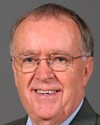Thank you very much.
Minister, thanks for being here today, and thanks for all the good work you're doing. It's wonderful to see and I commend you for it.
What we're looking at here is the federal role, how we can support what you're doing, how we can enhance what you're doing. I have some concerns in terms of even the good work you're doing and the program you're doing.
We're targeting 25% of poor children over five years. I guess my question is, what about the other 75%? What about those folks who aren't going to be helped by the initiatives that are very good, that you've talked about, that will go to children and their families?
You talked about aboriginal programs, single adults who, for one reason or another, particularly in this difficult economy, will not find work and will struggle on welfare—which, as you know, is atrociously inadequate—and people living with disabilities, who speak to us on a regular basis about the shortfall.
You mentioned CPP as a good example of where we as a country decided we were going to do something. And we did it. We didn't say we were going to do 25% in five years and leave 75% out and all that that entails: who deserves it more, who gets it earlier, who gets it next, all that kind of thing. We decided we were going to lift everybody. We first lifted them and then we lifted them again with the GIS. We did that.
Is there any way we, working with you as a federal government, can give you the capacity to do this quicker and to lift more now, as opposed to in five years or ten years, or whenever the next target is?

